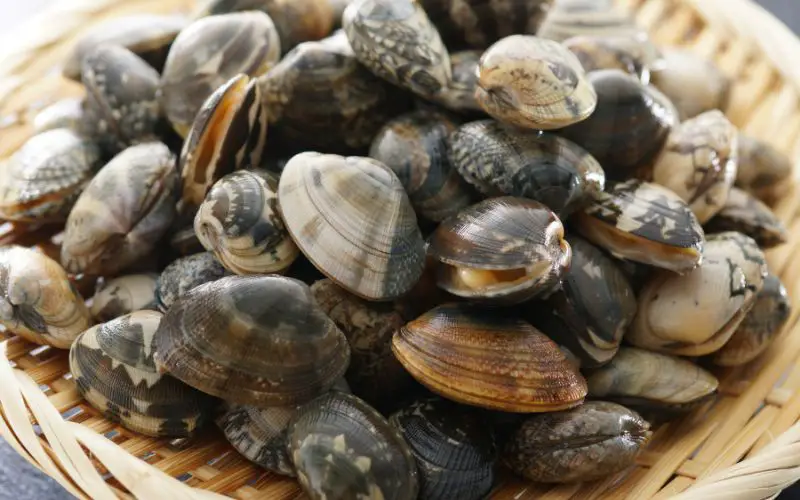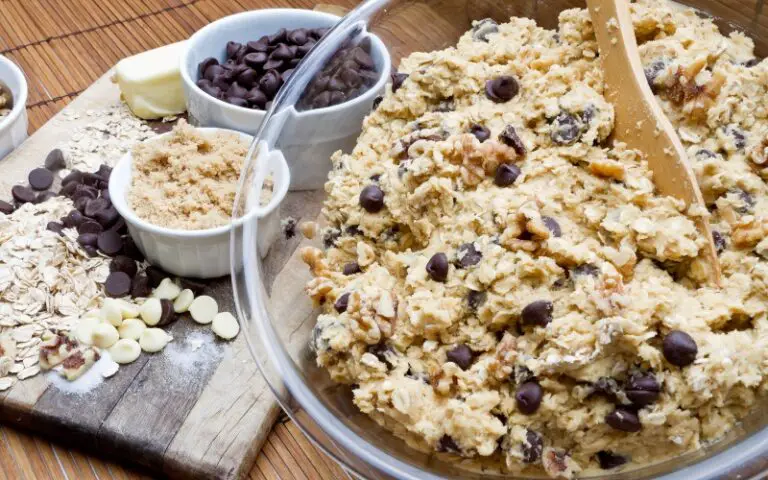This is How Long Clams Live Out Of Water!
Last updated on October 26th, 2022 at 05:19 pm
There are a few interesting facts about some aquatic animals and their environments.
Clams, amongst many other aquatic living organisms, are of particular interest, as they are edible and good for food.
However, since they are aquatic organisms, it is always necessary to question if they can also somehow live out of water.
This article contains everything about clams, their habitat, and how to keep them alive outside water before preparing them for food.
Clams cannot live conveniently out of the water without routine care and maintenance. However, in the case of drought, clams will slow down their metabolic activity by going into a safe mode. They do this by closing up their shells, thereby shutting down all processes except the essential ones.
Can Clams Live Out of Water?

Water is practically the natural habitat of clams and all its other species/genera. Therefore they will barely survive outside water.
Barely because outside water is not the ideal environment for its survival. However, clams can enter a state of dormancy as some plants do.
Therefore, whenever there’s a drought of some sort, there’s a likelihood that clams will still live.
Nevertheless, you will have to pamper them to survive outside water bodies.
I can therefore say that its survival to a great deal will depend on the storage condition of the clams.
The storage condition outside water will determine whether the clam will live.
Clams need sufficient water volume at their disposal for their survival. Aside from their survival alone, clams need enough water as a matter of support for their nutritional needs.
Various suggestions around the habitat of clams say that a clam needs at least 10 gallons of water in the aquarium.
It means that clams will hardly survive on their own without enough water.
As mentioned above, despite the water being claimed’s natural living habitat, there’s still a possibility of survival outside water.
Clams can live for up to about 4-6 days without water. However, Clams will only live out of water under a prepared and well-maintained conducive environment.
For instance, clams can stay inside the refrigerator for about 2-3 days and last even longer inside a freezer.
In summary, clams live comfortably and carry out all their life processes in water bodies.
However, outside water, you must make the environmental condition favorable for survival.
Below are some species of clams and their preferred natural habitat.
| Species of Clams | Preferred Habitat |
|---|---|
| Razor and steamer clams | Fresh/salty water bodies |
| Quahogs | Sea floors and some soft substrate |
| Palourde clams | Within the depth of sea muds. |
How Long Can You Keep Clams Alive?
Clams can stay 4-6 days tops on a normal regular refrigerator. However, clams can last even months without dying with the proper care and well-prepared storage environment.
Like fishes outside water, Clams’ survival largely depends on the storage environment.
However, there’s a gross difference in the caring of clams compared to other aquatic animals.
Outside water, you can refrigerate the clam to slow down its metabolic activities, thereby extending its shelf life.
Since clams don’t die when taken out of the water, you can pamper them to stay alive.
I’ll be advised you store it in an open metallic container only to have a damp cloth or towel as a cover.
Do well to place the container in the coldest part of the refrigerator, preferably at the back of the fridge.
The colder the storage condition, the better the chance of its survival.
Scientifically speaking, bacteria that catalyze decay grow rapidly at room temperature. It becomes a necessity to refrigerate clams at all times.
We can infer from the above that a cold temperature is the only ideal environment for their survival outside water.
To further keep clams beyond the due time of storage, do well to freeze the clam.
However, you must be careful when attempting to freeze clams to avoid freezer burn.
You can achieve this by placing the clams inside a heavy-duty freezer bag before putting them inside the freezer.
Under this state, clams can stay alive and safe for up to 3 months without going bad. Therefore, to be assured that your claim is still alive, freeze them.
How Long Will Clams Survive In a Bucket?
Razor clams can stay up to three days in a bucket of water. However, hard-shell clams will stay longer, counting up to 10 days or more. It depends on the species in this case.
It is worth noting that clams don’t survive in every kind of water but a bucket full of salty water.
Also, be sure it is a metallic bucket as it helps retain the cold environment. The general rules for caring for clams are basic and simple.
You are only allowed to cover them with a damped cloth. Do not store clams or shellfish in general in an airtight container.
In addition, whenever you want to store shellfish in a bucket, the normal fresh water isn’t always the ideal type for every clam species.
Like the clams, most shellfish find salty water bodies more favorable for survival.
It means that the bucket with which you want to store the clams should contain a very salty solution.
To better extend the shelf life of clams, you can surround the bucket or bowl with ice to provide an extra cold habitat.
Can You Keep Clam Alive Overnight?
Soak them inside salted water to keep clams alive overnight, preferably in a wide bowl or bucket.
The goal is to make the water taste like sea water which is the natural habitat of clams.
Some clams on one end benefit enormously from soaking them overnight in salty water.
For instance, steamers and the popular razor clams never close when in salty water.
The belief is that salt has something to do with the anatomy of the clams. The above trick will suffice for an hour to keep the clams overnight.
Another way to keep clams alive overnight is to keep them in a cold environment, preferably in a refrigerator.
You can also store fresh clams overnight by bagging them in a breathable freezer bag.
Refrigerating clams is the best chance they have for survival outside their habitat.
A good trick is to place the bag of clams in the coldest part of the fridge, which happens to be the back of the fridge.
However, storing the clams in a pile of ice will also do the trick. The idea is to keep the clams in a cold environment that slows the metabolic activities, keeping them fresh.
How Do You Know If Clams Are Dead?
One primary indicator of when a clam is dead or alive is whether the shell is closed or open upon every physical touch.
Clams, oysters, mussels, and other aquatic animals have what is known as chemoreceptors which makes them very sensitive.
The chemoreceptors around the two adductor muscles firmly hold the clam shells together.
Normally, for a clam that is alive, on tapping the clam, the shell will close down quickly.
Usually, every alive clam shell is slightly open, possibly for respiratory purposes.
If the shells are closed or refuse to close down when you tap the shell, it means that the clam is dead.
At this point, do not tempt fate by attempting to prepare and eat them. All you can do is discard it as it is already dead.
Another strong pointer to knowing dead clams is if it floats on water. If a clam floats on water, it is evident that it is dead.
At such a point, throw them away and do not attempt to eat them.
The fact that clams are frozen doesn’t mean they are dead. Quite the opposite, frozen clams are still alive and will return to life when thawed.
It will amaze you that within 12 hours in the water, they will become as fresh as though that was the normal state.
Also, the smell of the clams is another culprit to knowing if a clam is dead or not.
Naturally, a bad smell is a pointer to the fact that something has gone bad and is no longer good for use.
Conclusion
Clams are great resources for human foods that require deliberate methods of storing them before eating.
Meanwhile, ocean sand and deep water mud are the natural habitats of clams, and it is still possible to keep them alive outside the water.
One of the major ways of doing so is by providing a cold storage environment for the clams.







